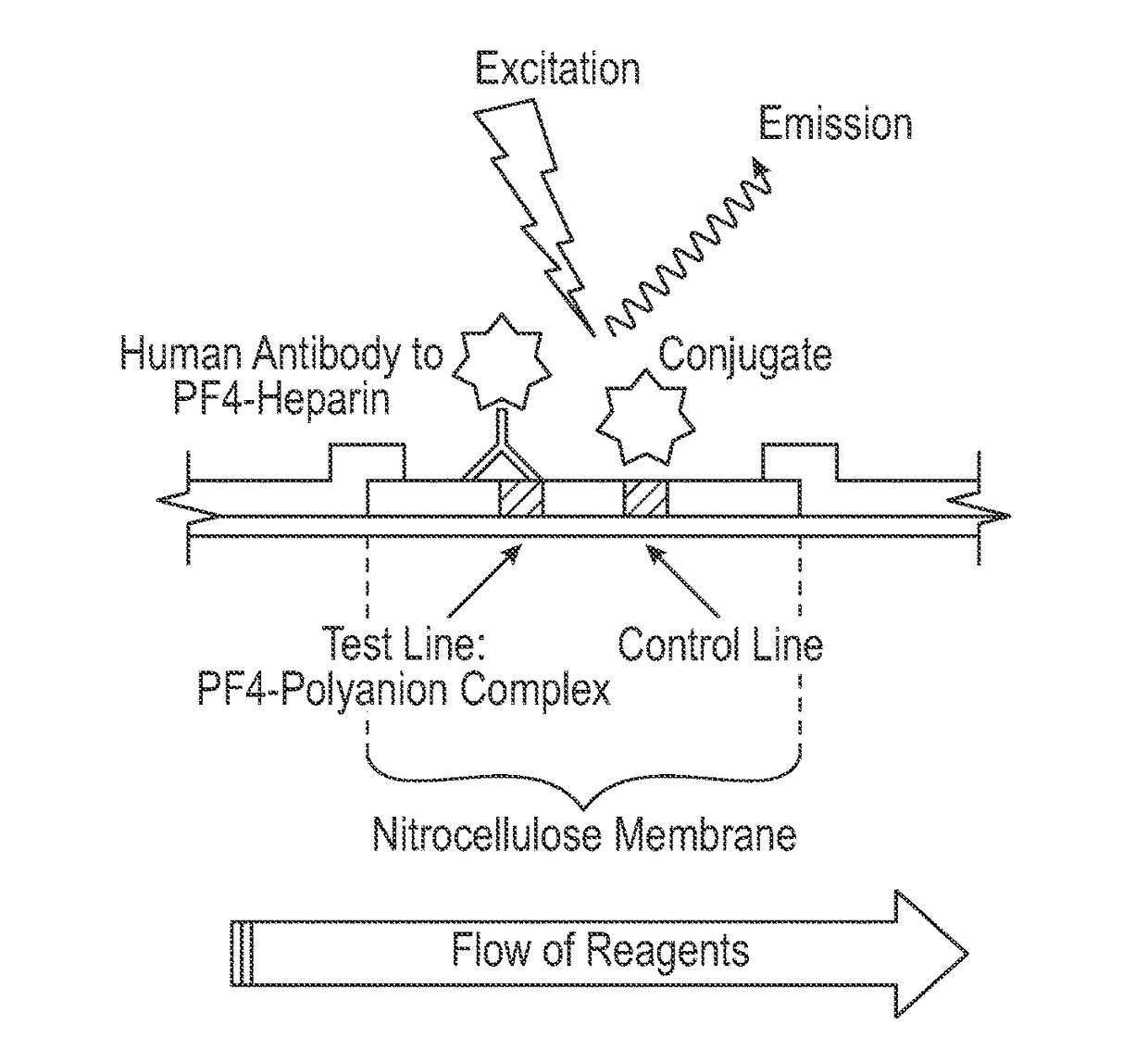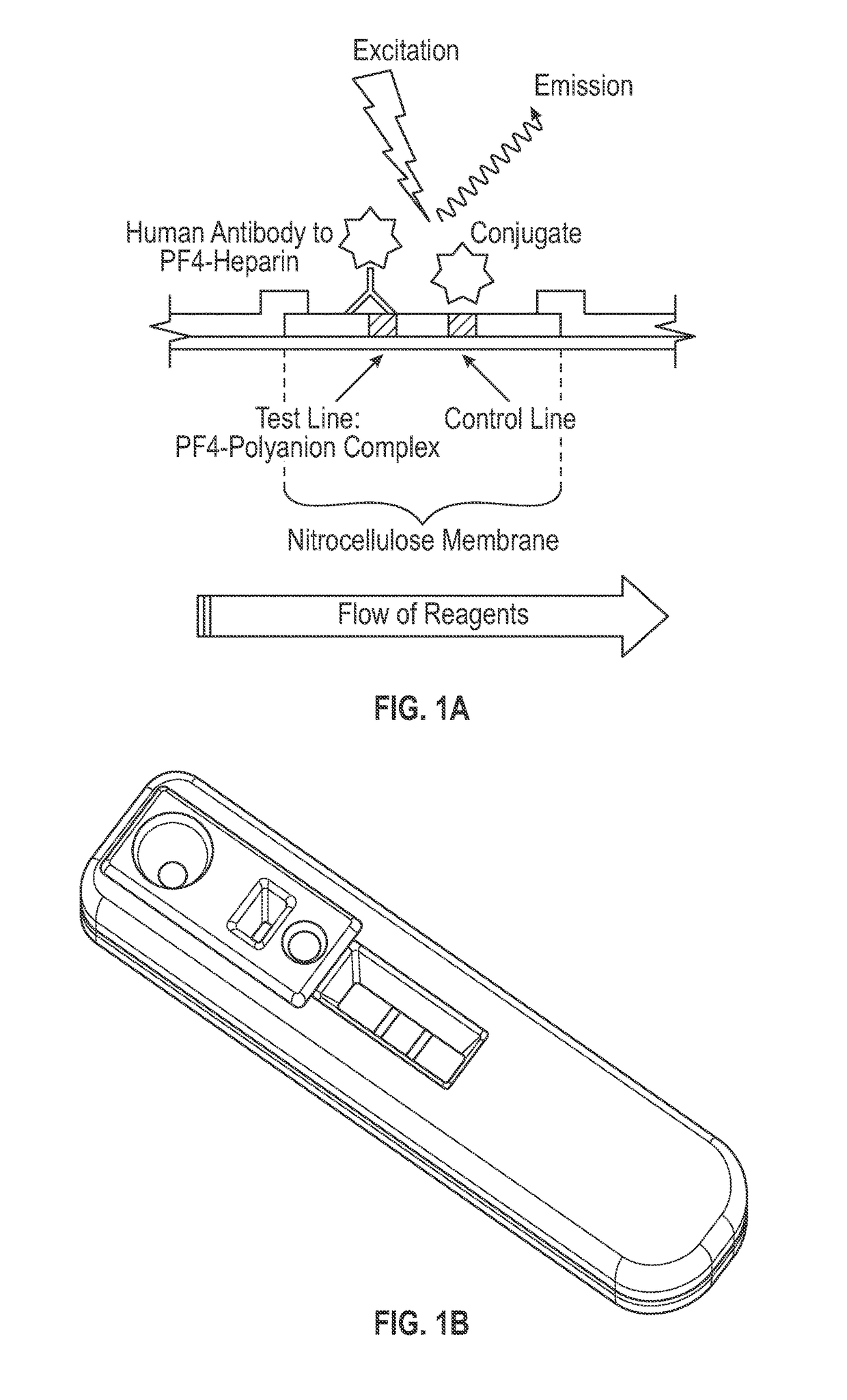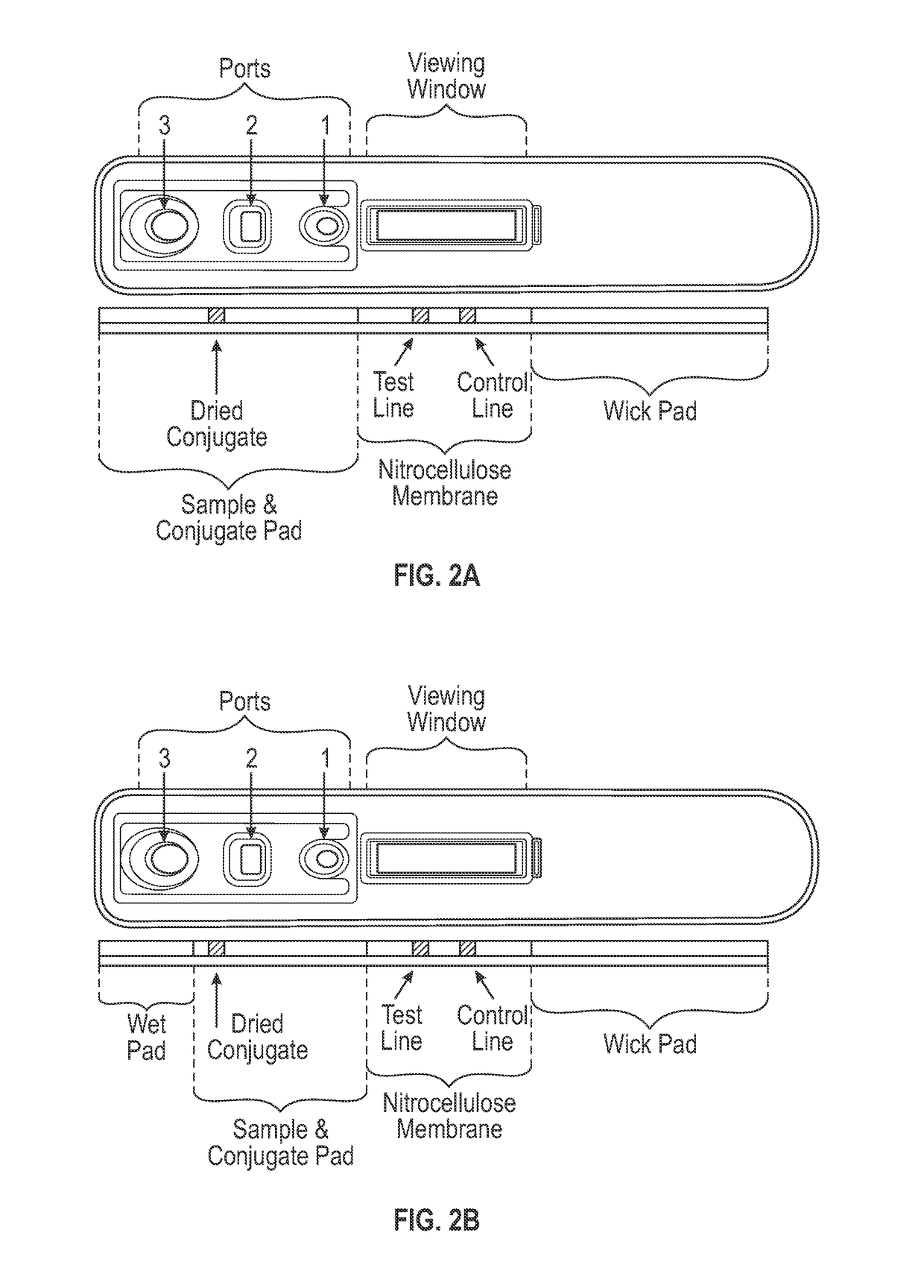Diagnostic devices, methods and systems for detecting platelet factor 4 (PF4)/heparin antibodies
a technology of platelet factor 4 and detection method, applied in the field of immunodeficiency diagnosis, can solve the problem of providing a very limited dynamic range, and achieve the effect of facilitating the visibility of antibodies and facilitating the visibility of antibodies
- Summary
- Abstract
- Description
- Claims
- Application Information
AI Technical Summary
Benefits of technology
Problems solved by technology
Method used
Image
Examples
example 1
Preparation of PF4 / Heparin Lateral Flow Assay Device
[0084]A polyester conjugate pad was blocked with a blocking buffer containing 10 mM borate, 3% bovine serum albumin (BSA), 1% polyvinylpyrrolidone (MW 40,000, PVP-40), 0.25% Triton X-100 (octylphenol ethylene oxide), and 0.05% 2-methyl-4-isothiazolin-3-one and 5-chloro-2-methyl-4-isothiazolin-3-one (ProClin®), pH 8.0. An amine-reactive fluorescent dye label (DyLight™ N-hydroxysuccinimide (NHS) ester, Thermo Fisher Scientific Inc., Rockford, Ill.), was directly conjugated to a mixture of goat anti-human IgA, IgG and IgM antibodies according to the manufacturer's instructions (Instructions for DyLight™ Microscale Antibody Labeling Kits, Thermo Fisher Scientific Inc., Rockford, Ill.). The amine-reactive fluorescent dye labeled goat anti-human IgG antibody conjugate was dissolved in a buffer containing phosphate buffered saline (PBS), 0.05% ProClin®, 7% sucrose, and 3% trehalose, applied and dried on the conjugate pad.
[0085]A nitrocell...
example 2
PF4 / Heparin Lateral Flow Assay Protocol
[0087]The lateral flow assay protocol was as follows. A 5 μl serum sample was applied to the sample port, shown as port 1 in FIGS. 1A-1C, and 15 μl of sample buffer (1×PBS, 1% BSA, and 0.1% polysorbate 20 (Tween 20™), pH 7.4) was immediately applied to the sample buffer zone, shown as port 2 in FIGS. 2A-2C. After approximately 3 minutes, 90 μl of conjugate buffer (1×PBS, 1% BSA, and 0.1% polysorbate 20 (Tween 20™), pH 7.4) was applied to the conjugate buffer zone, shown as port 3 in FIGS. 2A-2C. After approximately 12 minutes, the assay cassette was placed into a fluorescence reader, and fluorescent signals from the amine-reactive fluorescent label were measured at the detection and control zones. Each sample was tested in the PF4 / heparin lateral flow assay using replicates of 4.
example 3
Comparative Performance of PF4 / Heparin Lateral Flow Assay
[0088]To compare the relative performance of PF4 / heparin lateral flow assay with that of a reference PF4 / heparin enzyme immunoassay, a sample set of 83 sera from patients on heparin therapy was tested in a PF4 / heparin lateral flow assay according to the present invention and a commonly used ELISA test, which is described in detail in U.S. Pat. No. 5,972,718. In the ELISA, a PF4 / PVS complex immobilized in microwells reacts with PF4 / heparin antibodies from a patient sample with subsequent detection via an alkaline phosphatase conjugate (PF4 Enhanced®, Gen-Probe GTI Diagnostics, Inc., Waukesha, Wis.). Both assays detect IgG, IgA, and IgM antibodies. The PF4 / heparin lateral flow assay was carried out as described in Examples 1 and 2 above, with the exception that the labeled anti-human antibody conjugate was applied to the conjugate pad in liquid form shortly after the sample buffer was applied to the sample buffer zone. Because t...
PUM
| Property | Measurement | Unit |
|---|---|---|
| molecular weight | aaaaa | aaaaa |
| molecular weight | aaaaa | aaaaa |
| molecular weight | aaaaa | aaaaa |
Abstract
Description
Claims
Application Information
 Login to View More
Login to View More - R&D
- Intellectual Property
- Life Sciences
- Materials
- Tech Scout
- Unparalleled Data Quality
- Higher Quality Content
- 60% Fewer Hallucinations
Browse by: Latest US Patents, China's latest patents, Technical Efficacy Thesaurus, Application Domain, Technology Topic, Popular Technical Reports.
© 2025 PatSnap. All rights reserved.Legal|Privacy policy|Modern Slavery Act Transparency Statement|Sitemap|About US| Contact US: help@patsnap.com



